The warm climate and the abundance of green areas make Florida the ideal habitat for numerous native and non-native animals – also for spiders.
While the vast majority of all Florida spiders are harmless for humans or larger pets, a few species can cause significant harm with their strong venom. This page provides an overview of the most common spiders in Florida and introduce you to the ones you should be careful about.
Table of Contents
Poisonous spiders in Florida
Even though almost all spiders use venom to subdue their prey, only very few species are considered medically significant, i.e. can deliver bites that frequently require medical attention.
Four species of widow spiders (Latrodectus) and the brown recluse spider (Loxosceles) are the only potentially dangerous spiders in Florida.
Widow spiders in Florida
Widow spiders (genus Latrodectus) are best identified by their large round shiny abdomen, long front and hind legs and a red or orange hourglass shape on the underside of their abdomen. Since they often hang upside down in their webs, it’s usually easy to identify this obvious warning sign.
In Florida, four species of widow spiders can be found:
- Southern Black Widow Spider (Latrodectus mactans)
- Northern Black Widow (Latrodectus variolus)
- Red Widow (Latrodectus bishopi)
- Brown Widow Spider (Latrodectus geometricus)
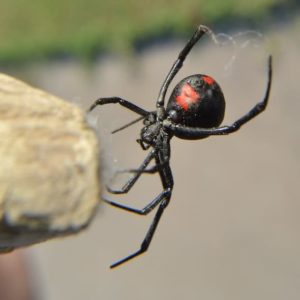
Latrodectus Mactans – Southern Black Widow
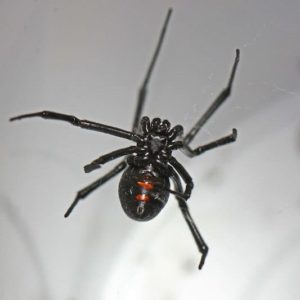
Latrodectus Variolus – Northern Black Widow
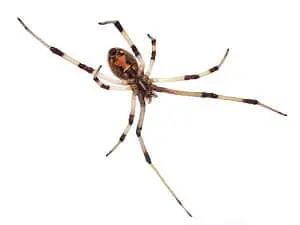
Latrodectus Geometricus – Brown Widow
Latrodectus mactans, the southern black widow
The adult female is mostly dark black with a red hourglass shape on the underside. The two sides of the hourglass are fused. The male is much smaller with long black and brown legs and red and white patterns on its back. Only the adult female is potentially dangerous.
Latrodectus variolus, the northern black widow
Northern black widows look almost identical to southern black widows. The best way to tell them apart is by looking at the hourglass shape: The northern black widow has two red triangles that look like an hourglass but don’t touch eachother.
Latrodectus bishopi, the red widow
The red widow is only found in southern and central Florida – nowhere else in the world. It almost exclusively appears in sand-pine scrub habitats. While the overall body shape is similar to other widows, the cephalothorax (head area) and legs are red, while the abdomen is black. This spider is also considered medically significant even though little is known about the potency and effects of its venom, as bites of this uncommon spider are rare.
Latrodectus geometricus, the brown widow
The brown widow is an introduced species, originally from South Africa. As their common name suggests, they are usually brown and also have an orange hourglass shape on the underside of their abdomen. Since brown widows can only inject a smaller amount of venom than black widows, they are not considered medically significant.
Brown recluse spiders in Florida
The brown recluse spider, also known as the “violin” spider or “fiddleback spider,” is the one of the most feared spiders in North America. As they prefer dry climate, they are not very common in Florida and are only found in the northeastern parts of the Florida panhandle.
The body size of a brown recluse spiders is typically 3/4 in., always less than an inch. Its completely brown with a violin-shaped darker marking on its back. The long thin legs are not hairy and the abdomen is brown or cream-colored without any patterns or markings. Recluse sightings in Florida are quite rare as most alleged sightings are similar-looking large brown spiders (see section below).
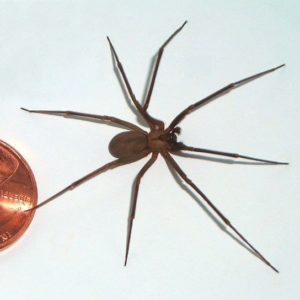
Loxosceles reclusa – Brown Recluse
Big brown spiders in Florida
The bigger the spider, the scarier it looks to many people. But rest assured, none of the large brown spiders that you may come across in Florida are dangerous to humans or pets. The only potentially dangerous brown spider, the brown recluse, never reaches a body size of 1 inch or above – any spider larger than one inch you may see in Florida is not dangerous. We’ll quickly introduce you to some of the most common ones: wolf spiders, fishing spiders and huntsman spiders.
Wolf spiders
Wolf spiders of the family Lycosidae are some of the largest and most commonly encountered spiders in North America. The Carolina wolf spider (Hogna carolinensis) can reach a body size of up to 2 inches. Wolf spiders are active hunters and do not spin webs to catch their prey. They are mostly seen running on the ground – in or around homes.
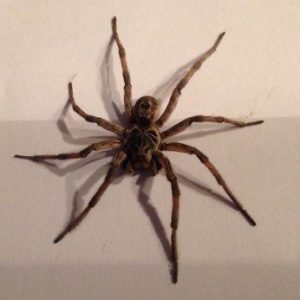
Lycosidae – Wolf Spider
Fishing spiders
Fishing spiders of the genus Dolomedes are often found near bodies of water and feed on insects as well as small fish or tadpoles. These spiders have perfected their life around water so much that some species even have the ability to walk on water.
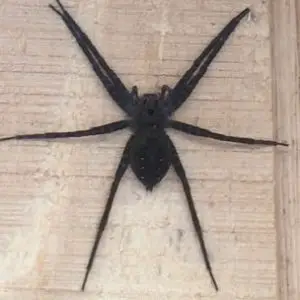
Dolomedes – Fishing Spider
Huntsman spiders
The tropical huntsman spider (Heteropoda venatoria) is the largest spider in Florida in terms of leg span. Adult females can reach a leg span of up to 5 inches (12 cm). Their bodies are usually slightly smaller than those of large wolf spiders. Huntsman spiders are also hunting spiders who don’t spin webs.
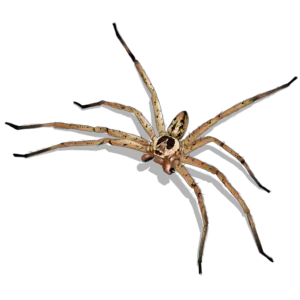
Heteropoda venatoria – Pantropical huntsman
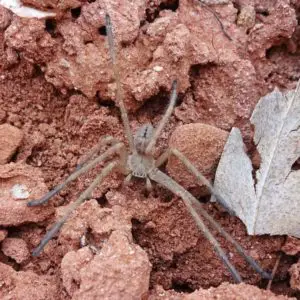
Olios Giganteus – Giant Crab Spider
Banana spider
The golden orb-weaver (Trichonephila clavipes) also known as the “Banana spider” by Floridians is a colorful large spider that spins large, golden webs. The female can reach a total leg span of three inches, males are less colorful and considerably smaller with an average body size of 1/4 inch (6 mm).
In autumn, these spiders, along with other orb-weavers are some of the most commonly encountered arachnids in gardens or forests. They are rarely encountered inside. Over the last years, a relative of the banana spider, the joro spider (Trichonephila clavata) has been introduced to Georgia from Asia and has established sizeable populations that are also spreading into northern Florida. Neither the banana spider nor the joro spider can cause medically significant bites.
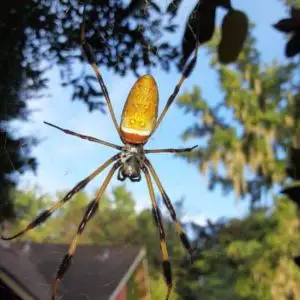
Trichonephila Clavipes – Banana Spider
Other common spiders in FL
Below is an overview of some of the most common FL spiders that we haven’t introduced in this article yet. Florida’s most common house spiders are cellar spiders (Pholcidae), false widows (Steatoda sp.), common house spiders (Parasteatoda sp.). In your backyard, you are more likely to find orb-weavers (Araneidae) who spin large webs, flower crab spiders (Misumena) or jumping spiders (Salticidae).
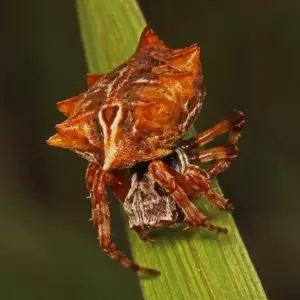
Acanthepeira Stellata – Starbellied Orb Weaver
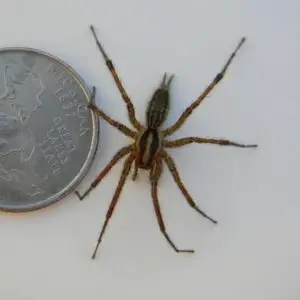
Agelenopsis – American Grass Spider
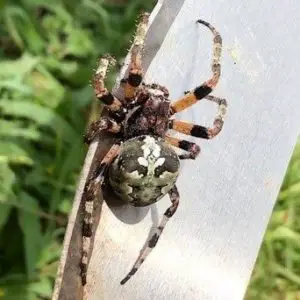
Araneus Bicentenarius – Giant Lichen Orb Weaver
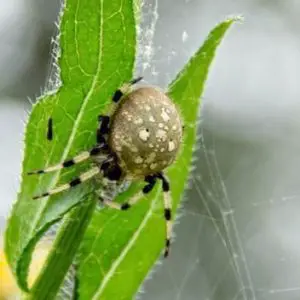
Araneus Trifolium – Shamrock Spider
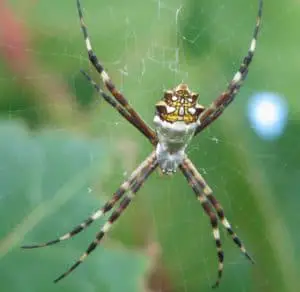
Argiope Argentata – Silver Garden Spider
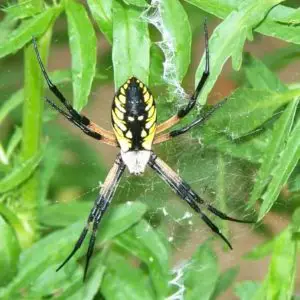
Argiope Aurantia – Black and Yellow Garden Spider
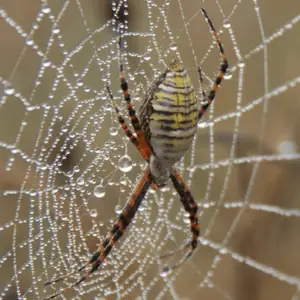
Argiope Trifasciata – Banded Garden Spider
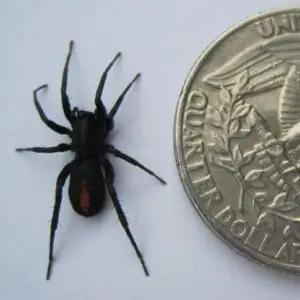
Castianeira Descripta – Red-Spotted Ant Mimic Spider
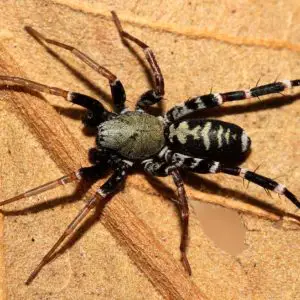
Castianeira Longipalpa – Long-Palped Ant Mimic Sac Spider
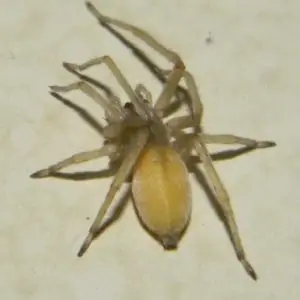
Cheiracanthium Mildei – Northern Yellow Sac Spider
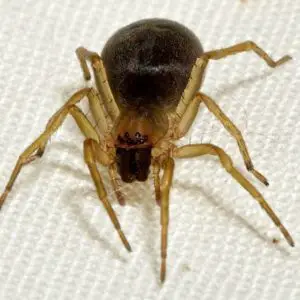
Clubiona – Leaf-Curling Sac Spider
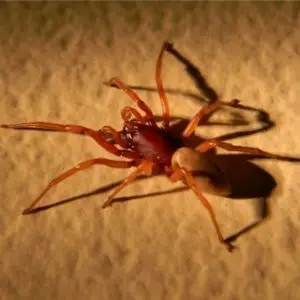
Dysdera Crocata – Woodlouse Spider
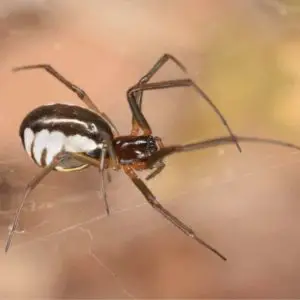
Frontinella Pyramitela – Bowl and Doily Spider
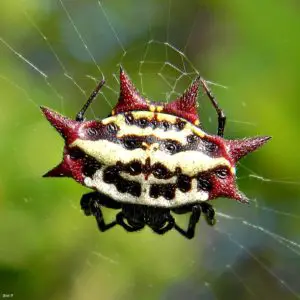
Gasteracantha Cancriformis – Spinybacked Orb Weaver
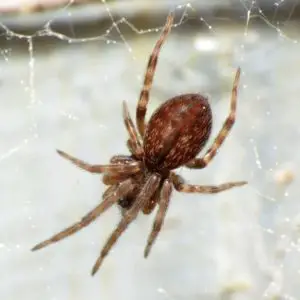
Gray House Spider – Badumna Longinqua
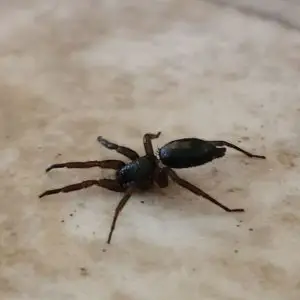
Herpyllus Ecclesiasticus – Eastern Parson Spider
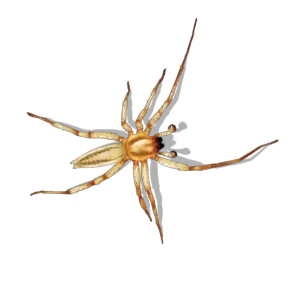
Hibana – Ghost Spider
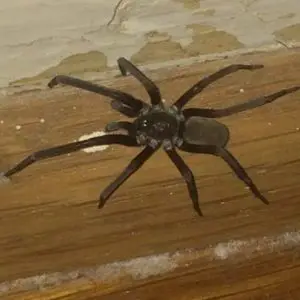
Kukulcania Hibernalis – Southern House Spider
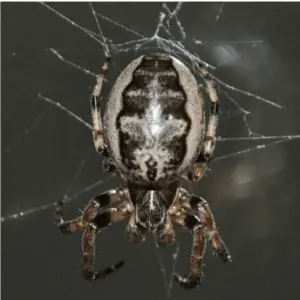
Larinioides Cornutus – Furrow Spider
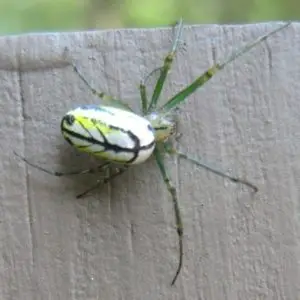
Leucauge venusta – Orchard Spider
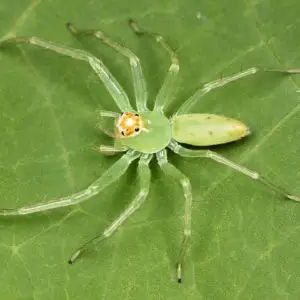
Lyssomanes Viridis – Magnolia Green Jumper
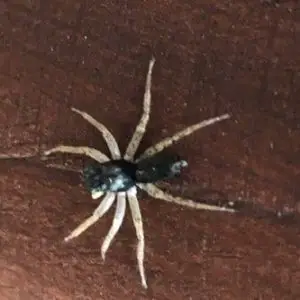
Maevia Inclemens – Dimorphic Jumper
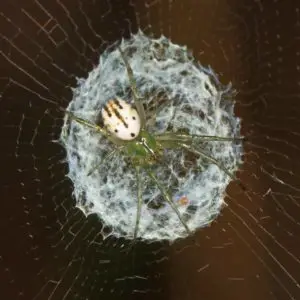
Mangora gibberosa – Lined Orbweaver
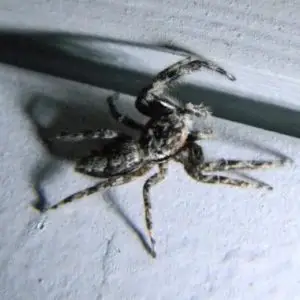
Menemerus Bivittatus – Gray Wall Jumper
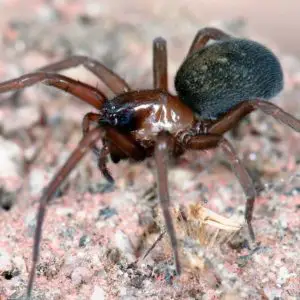
Metaltella Simoni – Hacklemesh Weaver
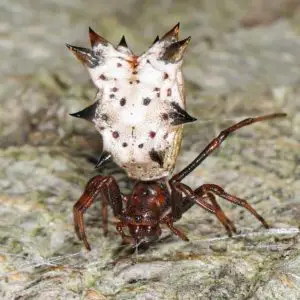
Micrathena gracilis – Spined Micrathena
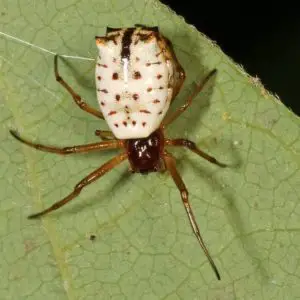
Micrathena mitrata – White Micrathena
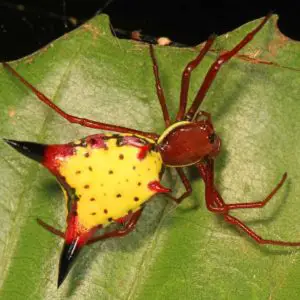
Micrathena Sagittata – Arrow-Shaped Orbweaver
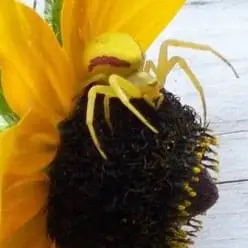
Misumena – Flower Crab Spider
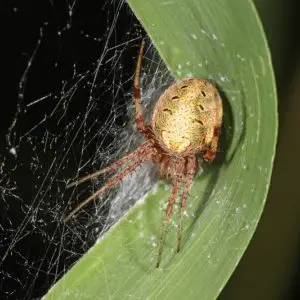
Neoscona Arabesca – Arabesque Orb Weaver
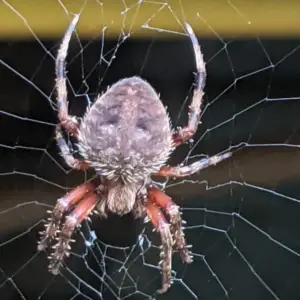
Neoscona crucifera – Spotted Orb Weaver
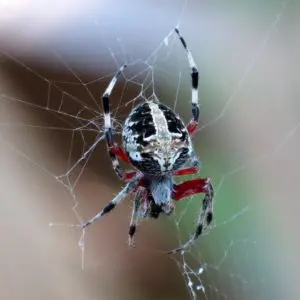
Neoscona domiciliorum – Red-femured Spotted Orbweaver
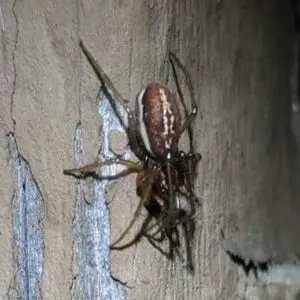
Pachygnatha
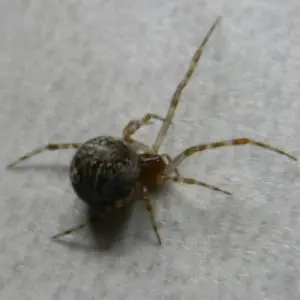
Parasteatoda tepidariorum – The Common House Spider
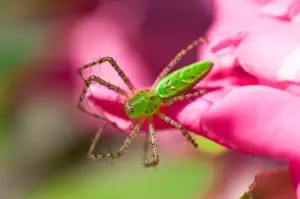
Peucetia viridans – Green Lynx Spider
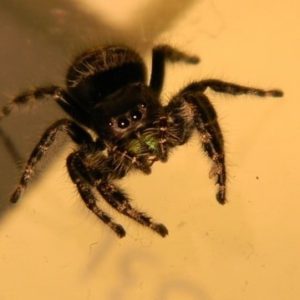
Phidippus audax – Daring Jumping Spider
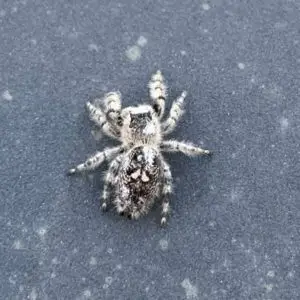
Phidippus Regius – Regal Jumping Spider
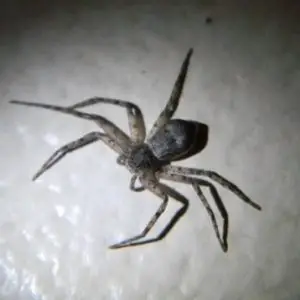
Philodromus – Running Crab Spider
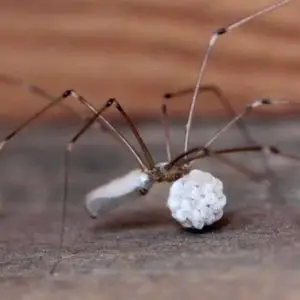
Pholcidae – Daddy Long-Legs or Cellar Spider
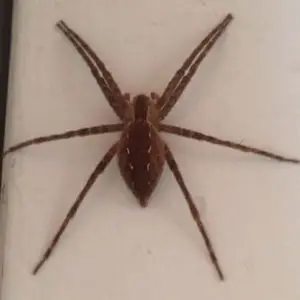
Pisaurina Mira – American Nursery Web Spider
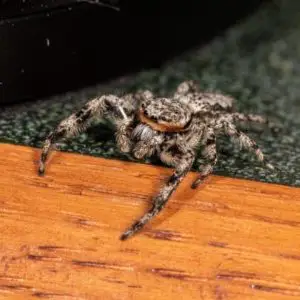
Platycryptus Undatus – Tan Jumping Spider
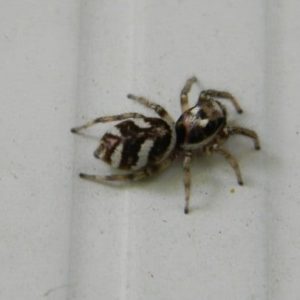
Salticus Scenicus – Zebra Spider
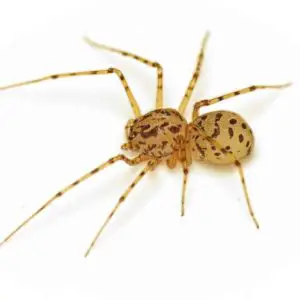
Scytodes Thoracica – Spitting Spider
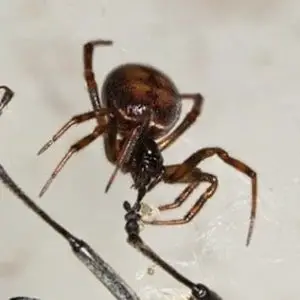
Steatoda Bipunctata – Rabbit Hutch Spider
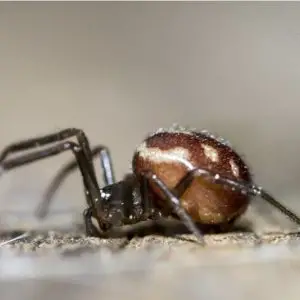
Steatoda Grossa – False Black Widow Spider
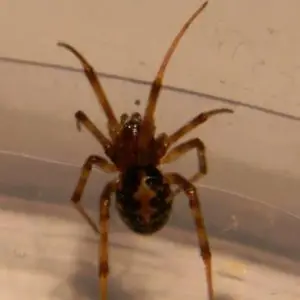
Steatoda Triangulosa – Triangulate Cobweb Spider
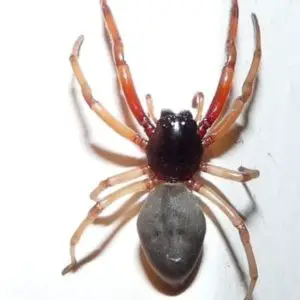
Trachelas Tranquillus – Broad-Faced Sac Spider

Tropical Orb Weaver – Eriophora Ravilla
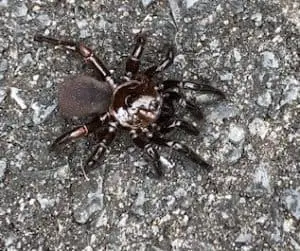
Ummidia – Trap-Door Spider
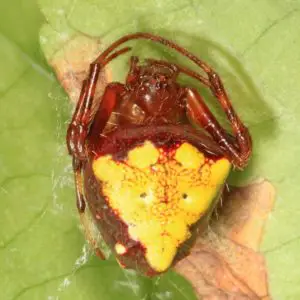
Verrucosa Arenata – Arrowhead Spider
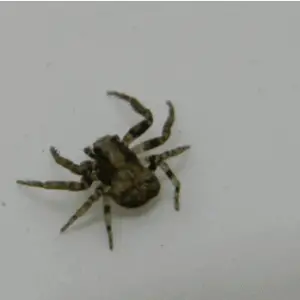
Xysticus – Ground Crab Spider
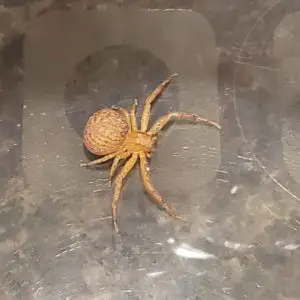
Xysticus Funestus – Deadly Ground Crab Spider
Florida spider identification
If you have found a spider in Florida that is not on this article or that you cannot identify, head over to our spider identification page. We have built a spider identification tool where you can answer a couple of questions and the tool will show you a list of potential matches. If that still fails to identify your spider, you can take a photo of your Florida spider and upload it to that page. Our experts will give their best to identify the spider for you and get back to you as soon as possible.
